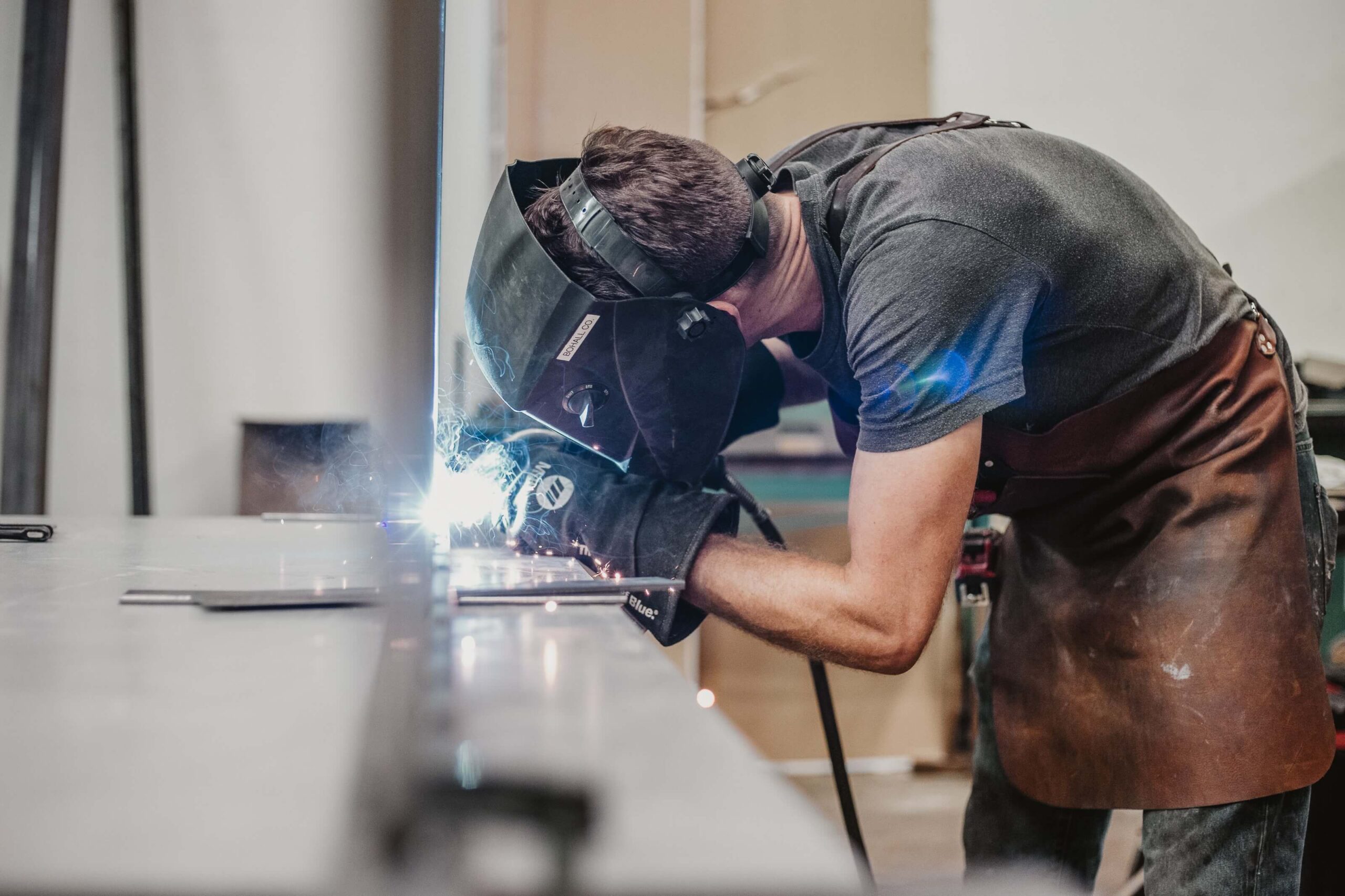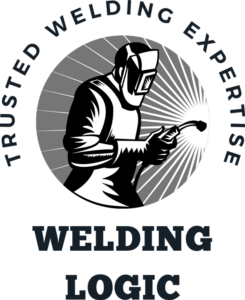There are many ways to add structural integrity to a project, and fish plate welding is one of the most effective. Fish plating can be secured in a number of different ways including bead welds, plug welds, rivets, bolts, and more, making it one of the most versatile techniques in engineering. But none of these aspects of fish plate tell us exactly what it is.
In This Article
What is Fish Plate Welding?
A fish plate is a plate of metal that touches the surface of two pieces of material and contributes to their strength. It covers the gap between the two pieces, holds them flush, and adds to the strength of the connection between them. Suppose you had three square pieces of iron, two of which you wanted to connect, end to end, very securely. You might weld two of the pieces together end to end. Then you could lay the third piece so that it covers both of the two plates by half. Then, if you were to weld that third piece in place, then you would have a fish plate weld.
The name comes from fish scales which often appear to overlap.
Fish plating is frequently used on railroad tracks, employing a third plate to hold two pieces of track end to end and flush. But that is not welding since they are usually bolted in place. The tendency of fish plating to keep two pieces flush and in line with each other makes it useful for railroad tracks and many other applications.
A fish plate can be connected in many ways including ordinary bead welding, bevel welding, and plug welding. Fish plating can also be done with rivets or bolts, but of course, our interest is welding.
Defining Fish Plate Welding
Fish plate welding is when we use a third piece of material to secure two other pieces and hold them flush. It is used primarily as a means of reinforcing a connection. It is also sometimes referred to as a splice bar or joint bar, but we will use the term fish plate for our purposes.
Fish Plate Welding Applications
Fish plating is most well known for its wide use in railroad connections and switch plates. But it is also very commonly used to repair and reinforce truck frames. In railroad use, the fish plate is usually bolted in place, but on truck frames, they are welded in place.
When reinforcing or repairing a truck frame, fish plates are often used on all four sides of a beam rather than on one or two sides only. Fish plate welding is also often used to repair or reinforce cranes.
Types of Fish Plate
Fish plate welding is a process by which we fuse or reinforce two pieces of material to create a stronger, more durable connection. It is often used to add extra strength to truck frame beams, to repair them, or both. It is a process that is best known for its use in laying railroad tracks. Fish plate welding can be done using an Arc welder, TIG, MIG, or a resistance welding machine.
Fish Plate Welding Applications
While the most common use cases for this type of weld are railroads, trucks, and cranes, fish plate welding is still useful for a wide range of applications. The massive versatility and ease of use make fish plate welding exceedingly useful in repairing nearly any kind of product or material.
The fact that adding an extra piece of plate often does not interfere with the design and use of most objects reduces the risks greatly. What’s more, almost without regard for the item being repaired, or even the skill of the welder, adding fish plate welds all but guarantees that strength will be added and not taken away.
In these ways, fish plate welding is a bit like slapping a piece of duct tape on something to hold it together. Sure, it might make the item less visually appealing. It might seem cheap and ad hoc, but at the very least it will add strength and cause little to no harm to the item in all but the most poorly executed cases.
What’s important is that we make sure to use the right materials and that the right amount of heat is used for the product you are trying to enhance or repair. Using the wrong type of welding material can weaken the metal, risking an unexpected failure.
The Pros & Cons of Fish Plate Welding
Fish plate welding is a versatile, relatively simple, and extremely effective way to add strength and repair metal objects. But it does have its drawbacks.
Advantages
Mechanical Simplicity
Fish plate is easy to understand. Anyone with access to a welding machine and who has a small amount of welding practice can apply an effective fish plate weld. If you understand how to use ordinary tape and can weld even a little, you can use fish plating to build, improve, and repair many different types of things.
Use of Use
Fish plate welding fits into a category sometimes referred to as affordable engineering. That is to say, you don’t need a lot of expensive equipment or an impressive education to make good use of this fastening method. It can even be used with other materials, screws, bailing, wire, and more.
High Functionality
This welding technique is useful in a huge range of applications. It can be used in cases where other techniques are not available or not practical due to limited training, experience, and materials. If you are not worried about how the final product will look, a fish plate weld will probably do the job.
Cost Savings
If you have some scrap material laying around, you can use it for fish plate welding rather than going out and buying a more form-fitting piece of material.
Disadvantages
Visually Unappealing
Fish plate welding can disrupt the visual appeal of some products.
May Encourage Poor Practices
Because it is easy to do, it may encourage the use of poor engineering practices and the use of the wrong materials.
Frequently Asked Questions
Fish plate welding is a type of welding that is used to join two pieces of metal together. Fish plates are often used in the construction of frames and other structures where two pieces of metal need to be joined together.
The main function of a fish plate is to provide a way to join two pieces of metal together. Fish plates are often used in the construction of frames and other structures where two pieces of metal need to be joined together.
When you fish plate a frame, you are essentially joining two pieces of metal together using a fish plate. This can be done by welding the fish plate to the frame, or by bolting the two together.
Fish plates got their name because they were originally used in the construction of fish hatcheries. The plates were used to join together the metal frames of the hatcheries.
There are two main types of fish plates: welded and bolted. Welded fish plates are typically used for joining together smaller pieces of metal, while bolted fish plates are better suited for joining larger pieces of metal.
Welding a fish plate is relatively simple. First, you will need to position the two pieces of metal that you want to join together. Then, you will need to clamp the fish plate in place. Once the fish plate is in place, you can start welding it to the metal.
Additional Sources & Resources
-Bibliography of SMAW Research & Sources: https://www.esabna.com/us/en/education/technical-article/smaw-literature.cfm
-The Procedure Handbook of Arc Welding: https://books.google.com/books?id=Iy4_DwAAQBAJ&pg=PA425&lpg=PA425&dq=fish+plate+welding+procedure&source=bl&ots=ewYuIRjkgM&sig=ACfU3U1YvALDpsOZCgFbVfyYnOMtKd8CiA&hl=en&sa=X&ved=2ahUKEwi4q7Gbp6_qAhWVnuAKHSdqB9cQ6AEwB3oECAgQAQ#v=onepage&q=fish%20plate%20welding%20procedure&f=false
-Evaluation of fillet welds in structural steelwork: https://www.researchgate.net/publication/228555490_Evaluation_of_fillet_welds_in_structural_steelwork
-Design of Steel Structures: https://books.google.com/books?id=CzgxDAAAQBAJ&pg=PA215&lpg=PA215&dq=fish+plate+welding+procedure&source=bl&ots=ryTX7UFELp&sig=ACfU3U1ZGXgbWB-AnLjpCWgEHY0ORi_Ajw&hl=en&sa=X&ved=2ahUKEwi4q7Gbp6_qAhWVnuAKHSdqB9cQ6AEwCHoECAgQAQ#v=onepage&q=fish%20plate%20welding%20procedure&f=false
-Underwater Welding Processes and Procedures: https://books.google.com/books?id=7ojuDwAAQBAJ&pg=PA428&lpg=PA428&dq=fish+plate+welding+procedure&source=bl&ots=OMAHAhnud8&sig=ACfU3U2rTtcITLnWqTXI-G6JBxhm3CiXpA&hl=en&sa=X&ved=2ahUKEwi4q7Gbp6_qAhWVnuAKHSdqB9cQ6AEwCnoECAgQAQ#v=onepage&q=fish%20plate%20welding%20procedure&f=false
-Handbook for Arc Welding and Cutting: https://books.google.com/books?id=JFwODAAAQBAJ&pg=PA222&lpg=PA222&dq=fish+plate+welding+procedure&source=bl&ots=-tDX7VFX8I&sig=ACfU3U1PbvTg5-L0mCpHUAjWNhcNDcsjuA&hl=en&sa=X&ved=2ahUKEwi4q7Gbp6_qAhWVnuAKHSdqB9cQ6AEwCXoECAgQAQ#v=onepage&q=fish%20plate%20welding%20procedure&f=false
-Principles of Modern Grinding Technology: https://books.google.com/books?id=rCdLzAEACAAJ&dq=fish+plate+welding+procedure&hl=en&sa=X&ved=0ahUKEwi4q7Gbp6_qAhWVnuAKHSdqB9cQ6AEIYTAJ
-Dictionary of Welding Terms: https://books.google.com/books?id=-wodAAAAMAAJ&q=fish+plate+welding+procedure&dq=fish+plate+welding+procedure&hl=en&sa=X&ved=0ahUKEwi4q7Gbp6_qAhWVnuAKHSdqB9cQ6AEIGjAA
-The Welding of Railway Vehicles and Locomotives: https://books.google.com/books?id=SxtzDwAAQBAJ&pg=PA435&lpg=PA435&dq=fish+plate+welding+procedure&source=bl&ots=-tib0ObP9Z&sig=ACfU3U1

